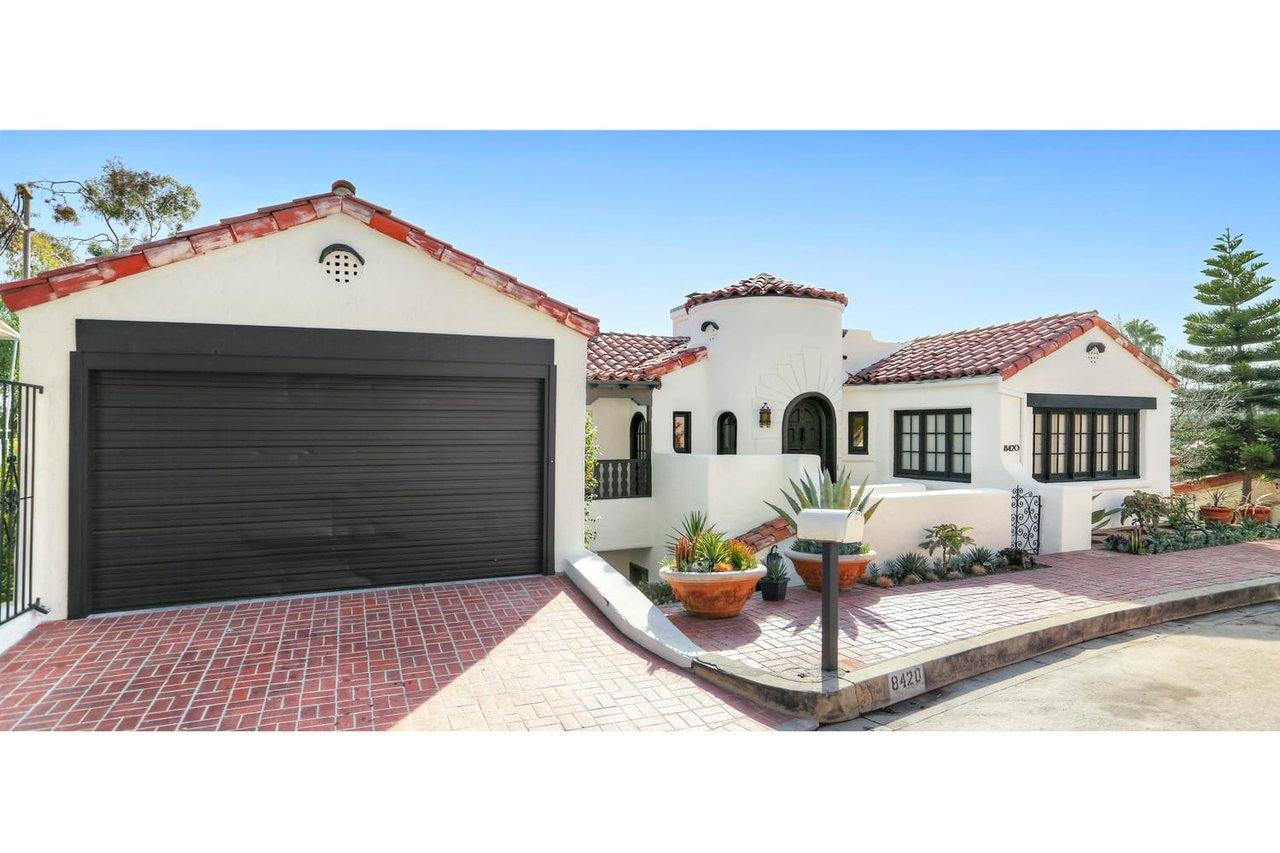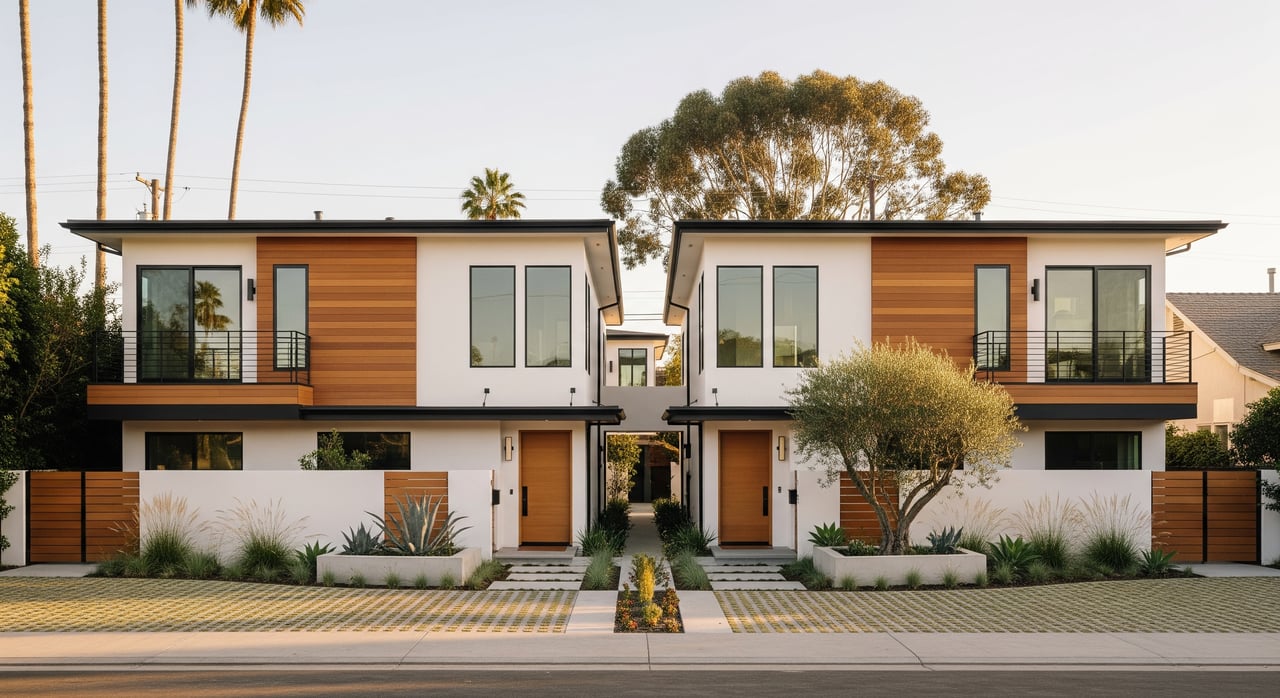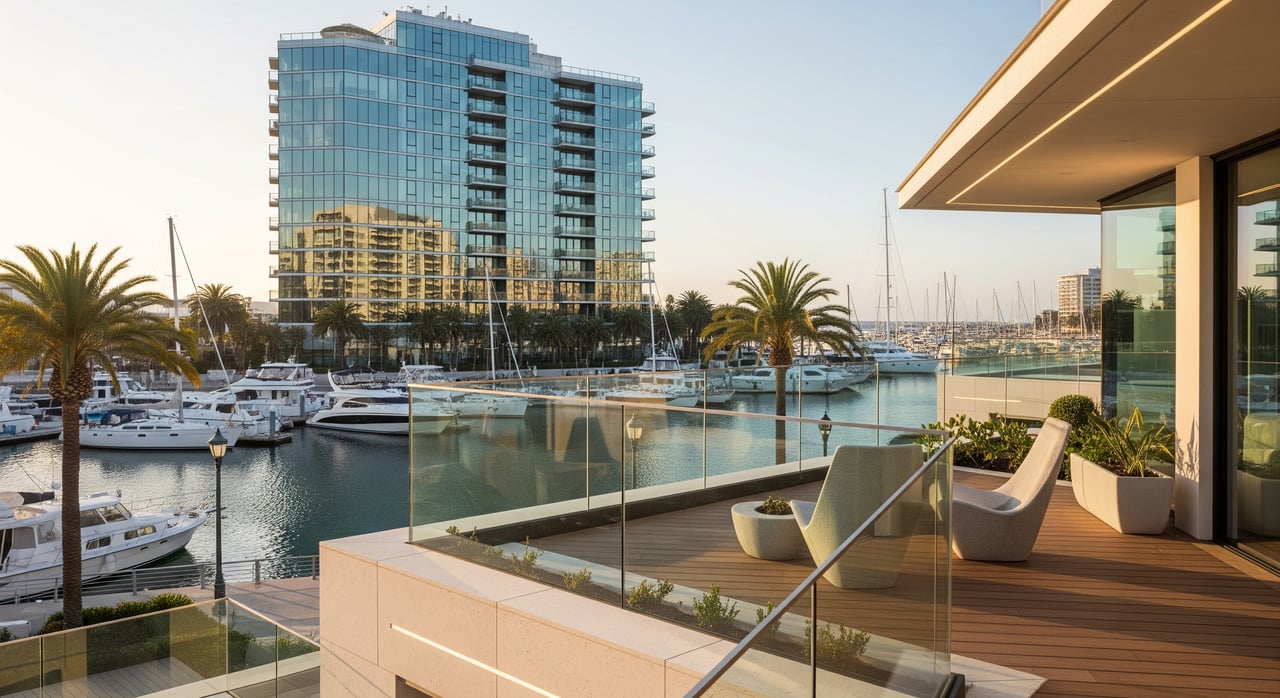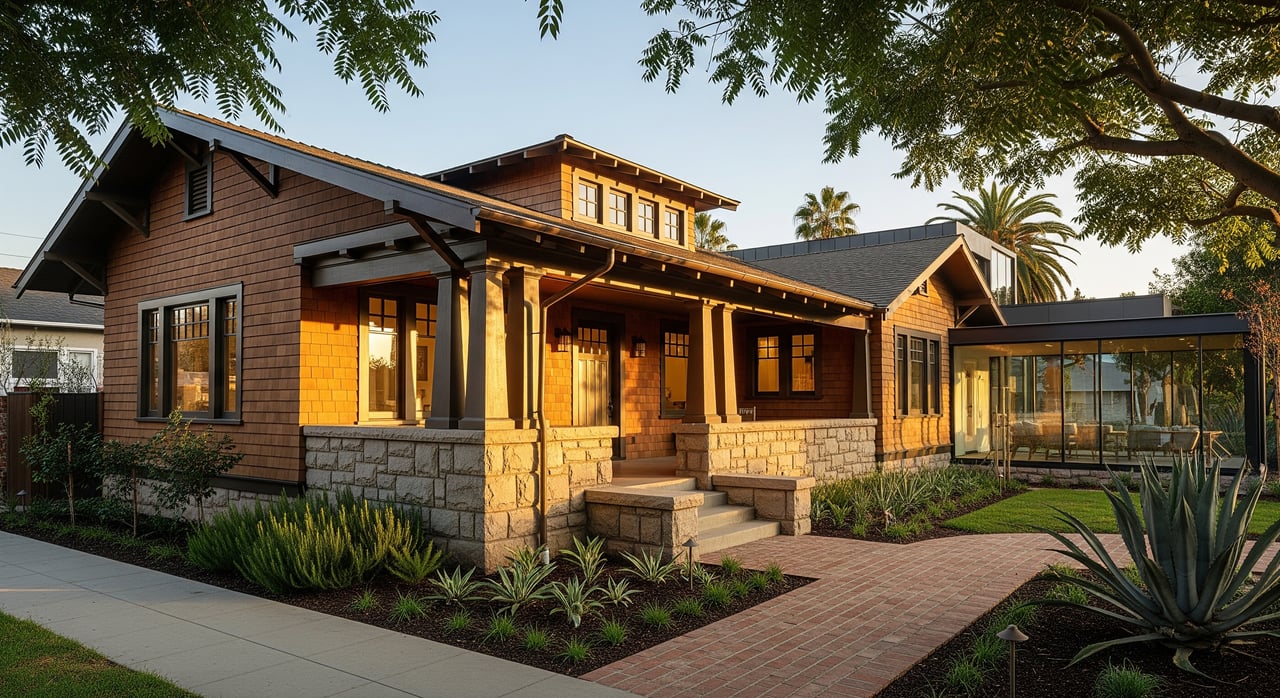With its sprawling cityscape and distinctive neighborhoods, Los Angeles has been a magnet for dreamers and innovators for centuries. Over the years, waves of settlers, fueled by economic booms and the allure of Hollywood glamour, have left their mark on the city's architectural landscape.
A Brief Overview of LA's Architectural Evolution: From its establishment in the 1700s to becoming a global hub for technology and entertainment, LA’s real estate has undergone transformative shifts. As the city's fortunes grew with the discovery of oil and the entertainment industry, so did its architectural aspirations. LA's real estate showcases an eclectic blend – from historic Mission Revival structures echoing the city's Spanish roots to sleek, futuristic homes embodying modern design principles.
Unraveling the Architectural Styles of Los Angeles
- Mission Revival: Inspired by the Franciscan missions, this style became a favorite for East Coast settlers in the late 19th century. With their characteristic stucco walls, low-pitched red clay roofs, and prominent arches, these homes are abundant in neighborhoods from Highland Park to Hollywood Hills. Los Angeles' distinctive Mission Revival architectural style, a nod to the Franciscan Alta California missions, are iconic structures easily recognized by their red clay tile roofs, plain stucco exteriors, and graceful arches complemented by mission-style parapets. As one delves into the LA architectural scene, the influential work of Arthur Benton, Arthur Page Brown, and John Byers comes to the forefront. Anyone exploring Los Angeles neighborhoods will find these designs encapsulating the city's deep historical roots and the charm of early California.
- Spanish Colonial Revival: Echoing Southern California's rich heritage, the Spanish Colonial Revival architectural style surged in popularity following the Panama-California Exposition of 1915-1917. Originated by the visionary architects Bertram Goodhue and Carleton Winslow, this style gracefully weaves together elements from Mission Revival, Mexican, Spanish Baroque/Churrigueresque, and Islamic designs. Modern-day Los Angeles is adorned with these captivating homes, characterized by their iconic low-pitched red tile roofs, inviting courtyards, pristine white stucco walls, vibrant painted tiles, elegant wrought-iron accents, and charming arched windows and doorways. The city's architectural tapestry is further enriched by the masterful contributions of noted architects like Elmer Grey, Myron Hunt, Wallace Neff, Reginald Johnson, George Washington Smith, and the legendary Paul R. Williams. When wandering through LA's neighborhoods, these Spanish gems stand as a testament to the region's historical and cultural lineage. Characterized by terracotta tiles, intricate tilework, and wrought iron accents, they continue to grace the city's streets today.
- Bungalow Courts: As a response to the influx of East Coast settlers, the city introduced multi-family Bungalow Courts, creating social, communal spaces. Los Angeles boasts a distinct architectural style with its iconic Bungalow courts, pioneered in 1909 by Pasadena's revered architect, Sylvanus Marston, these intimate detached homes surround communal courtyards, epitomizing Southern Californian charm. While varied architectural styles have adorned these courts, World War II marked a transition favoring denser apartment complexes. Today, these bungalow courts stand as nostalgic symbols of LA's rich architectural legacy. Though a rarity now, new versions are emerging, thanks to LA's Small Lot Ordinance.
- Victorian: Once the choice of LA’s elite, Victorian homes, particularly the extravagant Queen Anne style, still stand tall in areas like Echo Park, University Park, Angelino Heights and West Adams. These vintage homes, often distinguished by their ornate detailing, asymmetry, bay windows, and sometimes vibrant color palettes, blend beautifully amidst LA's diverse architectural landscape. Prominent Victorian sub-styles in LA include the Gothic Revival, with its pointed arches and intricate traceries, the Italianate's tall windows and cornices, and the picturesque Queen Anne, known for its elaborate ornamentation. As Los Angeles architecture has evolved, Victorian styles have harmoniously coexisted with modern and contemporary designs, creating a dynamic streetscape that pays homage to history while embracing the future.
- Craftsman homes are timeless staples in Los Angeles. Craftsman homes stand as iconic symbols of the Arts and Crafts movement. Originating from England, this movement showcased the beauty of craftsmanship and nature, contrasting the Industrial Revolution's mass-production approach. Key features of Los Angeles Craftsman bungalows include low-pitched rooflines, shaded porches, intricate woodwork, double-hung windows, and the unmistakable Batchelder tile fireplaces. Thanks to influential L.A. architects like Charles and Henry Greene, Ernest Batchelder, and the Heineman brothers, Arthur and Alfred, the city boasts a rich tapestry of these architectural gems. If you're keen on historic Los Angeles real estate, exploring Craftsman homes is a journey into architectural artistry and legacy.
- Beaux-Arts: Remnants of LA’s Roaring '20s, these imposing structures, with Greco-Roman influences, are now sought-after urban residences, especially in Downtown LA. Drawing inspiration from Greco-Roman designs, Beaux Arts structures boast iconic elements such as columns, arches, and domes. Constructed using premium materials like limestone, these buildings feature lavish interiors adorned with marble, mahogany, terrazzo, and brass accents. Their exteriors further captivate with bas-relief sculptures and vibrant glazed terra cotta tiles. The LA architectural landscape owes much to pioneers like John and Donald Parkinson, the team of Walker and Eisen, Curlett and Beelman, and the renowned Gordon S. Kaufmann. For those exploring Los Angeles real estate, the Beaux Arts style epitomizes opulence and classical grandeur.
- Georgian Revival, Grand and symmetrical, these residences became the retreats for moguls during the bustling 1920s, primarily in the upscale Brentwood and Bel-Air areas. In prestigious Los Angeles neighborhoods like Bel Air, Hancock Park, Brentwood, and up-and-coming neighborhood of West Adams, the Georgian Revival architectural style stands as a testament to refined elegance. These two-story homes, defined by their rectangular shape and symmetrical façades, often feature hipped or gabled roofs. Iconic elements include the main entrance adorned with a pedimented projecting pavilion, often flanked by pilasters or columns, classic double-hung sash windows, and ornate Palladian windows. LA's architectural heritage in this style owes much to the visionary works of renowned architects like Paul R. Williams, Roland Coate, and Gordon S. Kaufmann.
- Chateauesque: With the end of World War I and Hollywood’s rise, LA saw the introduction of French-inspired Chateauesque designs, elevating the city's architectural opulence.
- Mid-Century Modern: With the post-war population boom, LA witnessed the advent of these open-plan, glass-dominated homes, reshaping the city's residential ethos. Celebrating Southern California's enviable climate, these homes showcased sleek lines, open layouts, and innovative post-and-beam construction. The design, often marked by expansive glass walls and clerestory windows, blurred indoor-outdoor boundaries, echoing post-war optimism. Key neighborhoods like Silverlake, the Hollywood Hills, and nearby Palm Springs are treasure troves of this iconic style. Revered architects like Richard Neutra, John Lautner, and Buff & Hensman played pivotal roles in shaping this architectural revolution, with iconic creations dotting LA's landscape.
- Postmodern Paradigms: From the 1970s onward into the 2000s, LA’s real estate took a bold turn. Asymmetry, vibrant colors, and mixed materials define these eclectic marvels, with notable examples in Venice and Hollywood Heights. Contrasting Modernism's restrained simplicity, Postmodern designs embraced audacity with fragmented forms, vivid hues, and distinctive materials. This refreshing deviation became emblematic of LA's evolving cityscape during these decades. Staples of this genre, architects like Frank Gehry, with his iconic Walt Disney Concert Hall, and John Portman, have left indelible imprints on the city's architectural landscape, celebrating LA's spirit of innovation and creativity.
- Chateauesque or French Normandy architectural style captures the fantasy and opulence of 16th-century French chateaux, especially from the Loire Valley. Rising to prominence in the 1920s, this style charmed LA with its aristocratic allure and advances in veneer cladding techniques that mimicked luxurious masonry construction. Distinctive features encompass steeply pitched hipped roofs, turrets, gables, shaped chimneys, dormers, and round or gothic archways. Areas like Hollywood and Beverly Hills flaunt such grand residences. Pioneering architects like Leland Bryant, William Douglas Lee, Percy Parke Lewis, and John DeLario have left an indelible mark on this style within LA's architectural landscape.
- Art Deco style flourished in Los Angeles after being inspired by the 1925 Exposition des Arts Decoratifs in Paris. Gracing LA's cityscape with sleek, linear profiles, these buildings often utilize smooth-finish materials like stucco, glazed brick, and concrete block. Distinguishing Art Deco elements encompass setback facades, fluting or reeding around doorways and windows, intricately stepped-tray ceilings, and a profusion of ornate details characterized by geometric patterns such as ziggurats and chevrons. These designs are further enriched with vivid colors and motifs drawing from Egyptian, Native American, and other "exotic" influences. Esteemed architects like Claud Beelman, Leland Bryant, and the dynamic duo of John and Donald Parkinson were instrumental in shaping LA's Art Deco legacy.
-
Storybook: This type of architecture, also known as "Fairy Tale" or "Hansel and Gretel" style, is most commonly seen in areas of Los Angeles that were developing during the peak of the style's popularity, which was in the 1920s and 1930s. Notably:
Hollywoodland: This historic neighborhood in the Hollywood Hills is home to several iconic Storybook style homes. The area was originally developed as a promotional tool for a housing development, and its whimsical style was meant to attract attention.
Los Feliz and Silver Lake: Both neighborhoods have a diverse array of architectural styles, but you can find some charming Storybook style homes sprinkled throughout.West Hollywood: Particularly in areas like Spaulding Square, there are pockets of Storybook homes, reflecting the fantasy and allure of nearby Hollywood.
Beverly Grove and Fairfax District: These central LA neighborhoods also contain pockets of these whimsical homes.
It's also worth noting that while these neighborhoods may have concentrations of Storybook homes, individual examples can be found scattered throughout the city, testament to LA's rich architectural tapestry and the influence of the entertainment industry on home design.
Los Angeles real estate is a vivid mosaic, each tile telling a tale of its historic journey and dynamic evolution. Whether you're an architectural enthusiast, a prospective homebuyer, or just a curious wanderer, LA’s neighborhoods promise a captivating voyage through time and design.
-
Hollywood Regency architecture, a glamorous style rooted in the Golden Age of Hollywood cinema, is characterized by its bold use of color, glitzy finishes, and dramatic contrasts. This style blends elements from various periods, producing interiors and exteriors that are as theatrical as they are luxurious.
In Los Angeles, particularly in areas historically associated with the film industry, Hollywood Regency has made a significant architectural mark:
Beverly Hills: Known for its luxury and glamor, Beverly Hills boasts a number of Hollywood Regency homes that were once (or are currently) owned by film stars and industry moguls.
West Hollywood: This area, particularly in its upscale residential neighborhoods, showcases numerous examples of Hollywood Regency architecture.
Palm Springs: Though not in Los Angeles proper, Palm Springs is close enough to be noteworthy. This desert oasis became a hotspot for Hollywood celebrities, especially in the mid-20th century, and many homes and buildings here exemplify the Hollywood Regency style.
Hollywood Hills: Nestled above the bustle of Hollywood, the hills are sprinkled with Hollywood Regency homes, many of which offer stunning views of the city below.
Los Feliz & Bel Air: Both neighborhoods have homes that feature the ornate detailing and dramatic flair characteristic of Hollywood Regency.
Notable architects and designers who dabbled or specialized in Hollywood Regency include Paul R. Williams, John Woolf (particularly his collaborations with decorator Robert Koch Woolf), and Billy Haines.
While the architecture itself stands out with its distinctive aesthetic, Hollywood Regency also extends to interior design, where the glamor is amplified with mirrored surfaces, plush furnishings, and bold patterns. It's truly a style that encapsulates the golden allure of Hollywood.
In Los Angeles, the distinction between Spanish Colonial Revival and Mission Revival architectures lies predominantly in their design inspirations and intricacies. Mission Revival, influenced by California's historic Franciscan missions, is marked by its simplicity, featuring plain stucco exteriors, red-tiled roofs, and minimal ornamentation. Conversely, Spanish Colonial Revival boasts a richer blend of Mediterranean influences, including elements of Spanish Baroque and Islamic styles. As a result, buildings of this style often present intricate details, from painted tiles and wrought-iron accents to ornate window and doorway arches. While both styles draw from a shared Spanish and Mexican heritage, Spanish Colonial Revival is the more eclectic and ornate, whereas Mission Revival embodies a purer, more understated homage to the region's colonial past.
Navigating through Los Angeles reveals a rich tapestry of Spanish-influenced architecture, each variant lending its own essence. Spanish-Moorish, with its hallmark horseshoe arches and ornate motifs, graces landmarks like Malibu’s Adamson House and West Hollywood's Andalusia apartments; architects like Stiles O. Clements and the Zwebell duo leave their signature touch. Meanwhile, the Monterey Colonial Revival combines Mexican, New England, and Spanish elements, distinguished by two-story designs, verandas with wood railings, and characteristic louvered shutters. Visionaries like Roland Coate and Reginald D. Johnson championed this style. Together, these architectural nuances shape LA's unique aesthetic, a testament to its eclectic past.



